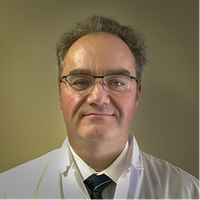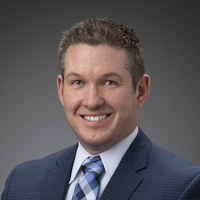Pittsburgh's Top Orthopaedic Elbow Surgeons
Your elbows are easy to take for granted when everything is working properly. An injury or disorder in them, however, can quickly make you appreciate how important elbows are to overall functioning in daily life. GPOA has a dedicated team of hand and upper extremity specialists in the Pittsburgh area who will diagnose your condition and determine the best course of action. Depending on your diagnosis, elbow surgery may be recommended.
What Is Elbow Surgery?
The elbow is an incredibly complex joint with many small parts. Elbow surgery is sometimes used to treat conditions that affect one or more of those components. It involves a surgeon opening the joint and manually repairing or cleaning out the damaged tissue.
How Is It Performed?
In order to understand how elbow surgery is performed, you must first have a clear picture of the joint’s structure. Three main bones come together to make up the elbow:
- The humerus is the bone that makes up your upper arm
- The ulna is a very thin bone that runs from the elbow toward the pinky side of your hand
- The radius extends from your elbow toward the thumb side of your hand
These three bones are joined together by a series of ligaments and muscles. They are capped by cartilage to facilitate movement and a synovial membrane that secretes fluids to help keep the joint lubricated.
When any of these components are damaged through trauma, overuse, or degenerative disease, surgery may be able to repair them. Many surgical procedures are now performed arthroscopically. This minimally-invasive technology has advanced tremendously in the past several decades and can now be used in many settings.
Elbow Arthroscopy
In many situations, our surgeons are able to perform arthroscopic surgery on elbow injuries. This utilizes a series of small incisions, through which a small video camera, called an arthroscope, and tools are inserted. Our surgeons use video monitors to view the inside of your joint, diagnose the exact problem, and treat damage as it is needed.
Because it is less invasive than traditional open surgery, there is less trauma to surrounding tissue. There is also significantly less scarring. Many people are able to undergo arthroscopic elbow surgery with a localized anesthetic, which greatly reduces risks associated with surgery. Additionally, there is often less stiffness and swelling after an elbow arthroscopy, which results in an increased range of motion and shorter recovery time.
Advances in arthroscopic instruments and techniques mean that it is a continually advancing process. At GPOA, our surgeons stay current with changing trends and new advances to ensure you receive the most appropriate and best possible care for your condition.
What Conditions Does It Treat?
People seek out elbow surgery for a variety of reasons. Some of the most common are age- or trauma-related degeneration within the joint. Injuries, whether it is a fracture or tear from acute trauma or a repetitive use injury like tennis elbow, are also often repaired through surgical intervention.
- Tennis elbow
- Carpal or cubital tunnel syndrome
- Rheumatoid arthritis
- Degenerative (osteo) arthritis
- Fractures
- Tendon lacerations and ruptures
Tennis Elbow Surgery
Lateral epicondylitis, commonly referred to as tennis elbow, is a condition that affects the tendons in your elbow. These stabilize the elbow and wrist joints. Performing certain motions repetitively, such as swinging a racquet or using a wrench, can cause micro-tears in the tendons near where they attach to the bones.
Surgery can be used to remove damaged tendon, re-anchor it to the bone, or tie it into another tendon for greater stability and reinforcement. It may be performed arthroscopically or through open surgery. It may be done as an outpatient procedure.
Cubital Tunnel Surgery
Cubital tunnel syndrome, or ulnar nerve entrapment, occurs when the ulnar nerve in your elbow is compressed. It is a painful condition that also causes weakness, numbness, or a feeling of pins and needles in the hand. Surgery for this condition focuses on relieving the pressure on your ulnar nerve. This may be done by making the opening it passes through wider or by moving it to another location in the elbow.
What Happens After Surgery?
Your treatment doesn’t end once your surgery is over. You will need to go through rehabilitation that generally includes physical therapy. Our specialists will follow your care and work with your physical therapists to tailor a rehabilitation program designed to meet your exact needs. This will ensure that your elbow and hand return to normal function as quickly and painlessly as possible.
Who Should Consider Having Surgery on Their Elbow?
If any of these statements seem relatable, surgery may be able to help:
- Your quality of life is affected by pain, discomfort or limited range of motion in your elbow joint
- You experience chronic pain in your elbow
- You have tried more conservative treatments like therapy and pain management without success
The best way to know if you are a good candidate for surgery on your elbow is to see an orthopaedic surgeon that specializes in treating upper extremities. Our highly-skilled specialists can help diagnose your condition and work with you to find a suitable course of treatment, which may include surgery. Contact GPOA today to schedule an appointment.
Don’t let pain, discomfort or stiffness compromise your quality of life.
Providers

Oriente DiTano, MD

Raymond Drabicki, MD

Juan Giugale, MD

Brian Kelly, MD

